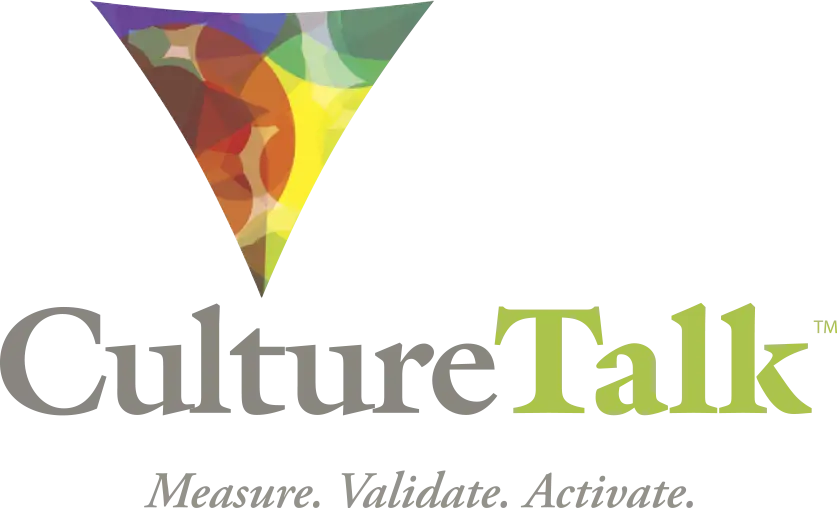Let Your Culture be Your Guide
- March 16, 2020
- 2:33 pm
- Theresa Agresta
Times of crisis are a test for even the healthiest of organizations. If you’ve been actively focused on your culture and people, now is the time to put the results to work.
This month, no matter what form the disruption takes, its safe to assume that your team will experience unexpected changes and you will be asked to respond quickly to unprecedented challenges. Things you have not run a simulation or drill for.
Perhaps it’s a scramble to support a sea of remote workers, moving you from a theoretical understanding of how systems and people connect to the pressure of hundreds of staff putting these features to the test overnight. Or maybe your business has ground to a complete halt, as the public abandons events, postpones outings and eats in, clients put contracts on hold or your supply chain dries up.
Your practice might be overwhelmed with calls for services in the healthcare or IT sectors, even as your staff deals with the realities of school children home unexpectedly and the potential of a personal quarantine.
Many leaders intentionally work toward positive, inclusive and productive workplace cultures. Yet, when something out of your control is forcing swift change for your business or employees, it may feel like all the systems you’ve put in place are slipping. It could cause you, your staff or your customers to feel stressed and insecure. It may instill panic.
It’s times like these that the expectations you articulate bump squarely into the actions you tolerate when things get tough. That’s because, hiding in these ‘unwritten rules of engagement’ lays your real organizational culture. And the cracks may be showing.
So, what can you do to lead toward effective outcomes? How do you ensure your communications are received the way you intend them? Who can you rely on when the team is disbursed?
.
Start with you.
As a human being, the first thing you’ll encounter are your own priorities and convictions. Pay attention to your instinctual responses to the challenges you’re facing. But pause before you articulate them. How you respond to decisions big and small will have oversize impact on the reactions of your entire organization as the COVID-19 crisis unfolds.
It pays to do a quick self-inventory to understand how your recurring behavior patterns can contribute to positively motivating your team and clients or where they may cause unnecessary damage. Reflect on what you have learned about your leadership style, strengths and shadow traits when you were not navigating the fallout of a global crisis. All these things will be under the microscope now. Use them to your advantage.
Remember your values.
This may seem too obvious. But I believe it’s where many cultural gaps begin. Either the articulated values of your organization are observed daily, or they are not really your values. Whether you live by traditional Mission/Vision/Values statements, have updated them with Purpose/Way/Impact statements or have articulated a Culture Code, waste no time in pulling these out as your guide. Perhaps your team has crafted Belief Statements as part of your brand. These can be very instructive as well.
Now hold your personal instincts up to the stated values. Are they compatible? Do you need to alter your decisions or tone to ensure alignment? Get really clear about each step you need to take and make tough choices about new or temporary policies. Your staff will recognize and appreciate your consistency.
- Does your organization make the health and well being of your employees a primary focus? You’ll need to prioritize this over concerns for lost profits.
- Do you exist to help people when they are struggling with health or safety issues? You’ll need to build contingency plans that allow your team to continue working as you motivate staff to carry on in spite of personal obstacles.
- Does your team pride itself on the promise to power through and meet commitments no matter what? You may need to find creative approaches to honor project goals, or honest ways to change commitments.
Use the organizational values to define your plans and refer to them openly in your communication efforts. These will no doubt be flavored with the best of your personal tendencies as you intentionally craft your responses. When your organization has clearly defined behaviors that are universally understood and a common language to communicate, people will rise to the occasion and follow your lead.
Next, know your employees.
What do you understand about your staff? What motivates or frightens them personally? How do they respond to crisis or stress? These things will be especially important if you need to move to remote work or enact a temporary layoff and they lose the face-to-face contact of their leaders and colleagues.
If you’ve completed team exercises or assessments to understand work preferences or personality styles, now is a good time to pull out the results. Everyone will respond to new mandates differently. Consider aligning temporary work assignments with the skills of your people, using the disruption as an opportunity to challenge them in positive ways. This can also serve as a distraction from any negative impacts.
Some employees may show improved performance under new circumstances. Introverts, for example, may thrive in the solitude of their home environment and become more productive. Those with untapped leadership tendencies may demonstrate increased initiative or shine a light on new ideas as a result. Others may relish newfound independence and thrive with a less defined schedule.
Beware of their potential shadow traits as well. Are they fearful of change? Do they need overt, clear instructions to feel safe? Is panic a common response to stress? These tendencies will put additional pressure on leadership to check-in with empathy and listen as you work through new challenges together. Consciously bring out the best in your people and be sure to notice and recognize their successes in spite of the difficult situation.
Trust your experts.
You’ve taken the time to set the stage and provide a positive example. Now trust your leadership team to follow suit. Establish a clear chain of command and delegate important responsibilities. Do not micro-manage decisions or sweat the small stuff.
Continue to point to the north star of shared values and culture and access your most effective coaching skills as you support the team efforts and encourage positive outcomes.
Over-communicate.
Just as all staff members have different strengths and personalities, they will filter emergency communications through their own personal lens. What seems crystal clear to you (who likely made the decisions) will raise questions from your staff and customers that you may or may not have thought about.
So be patient, and be prepared to communicate the same, clear messages through multiple channels, repeatedly. There is a reason why the cardinal rule of advertising is called the ‘Seven Times Factor.’ People need to hear messages many times before they internalize them and are ready to act.
Adjust your expectations.
The blessing and curse of modern communication is that updates are released by the hour – or even faster. You’re not the only one responding to this crisis, and authorities, markets, family realities and health outcomes may all impact the plan you put in motion. The one thing you can do consistently is take responsibility for the commitments you make and the tone you set as a leader.
So remember to breathe. Lean on the culture you’ve worked so hard to build as a primary driver to guide you through the days ahead. And learn about its weak spots.






